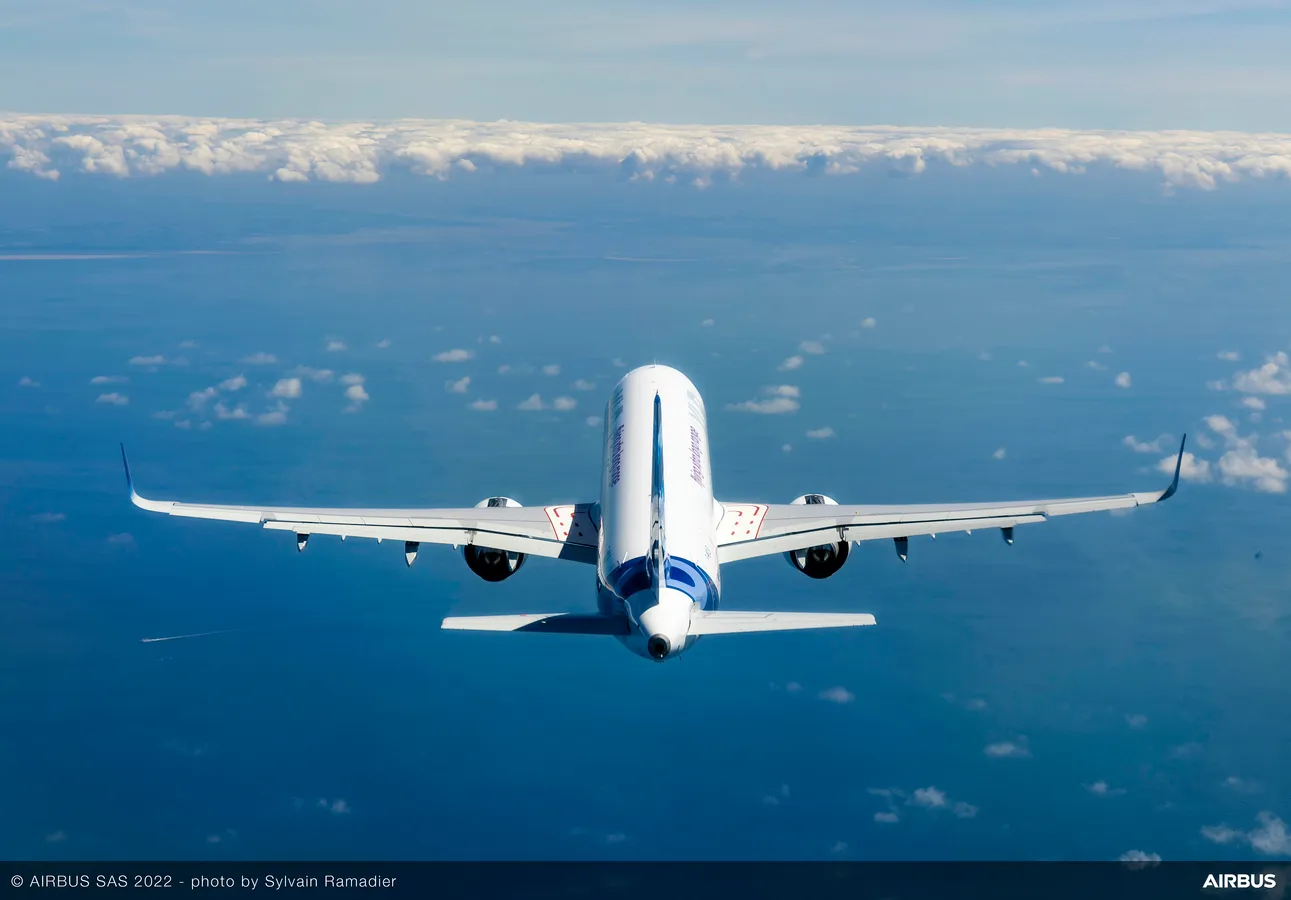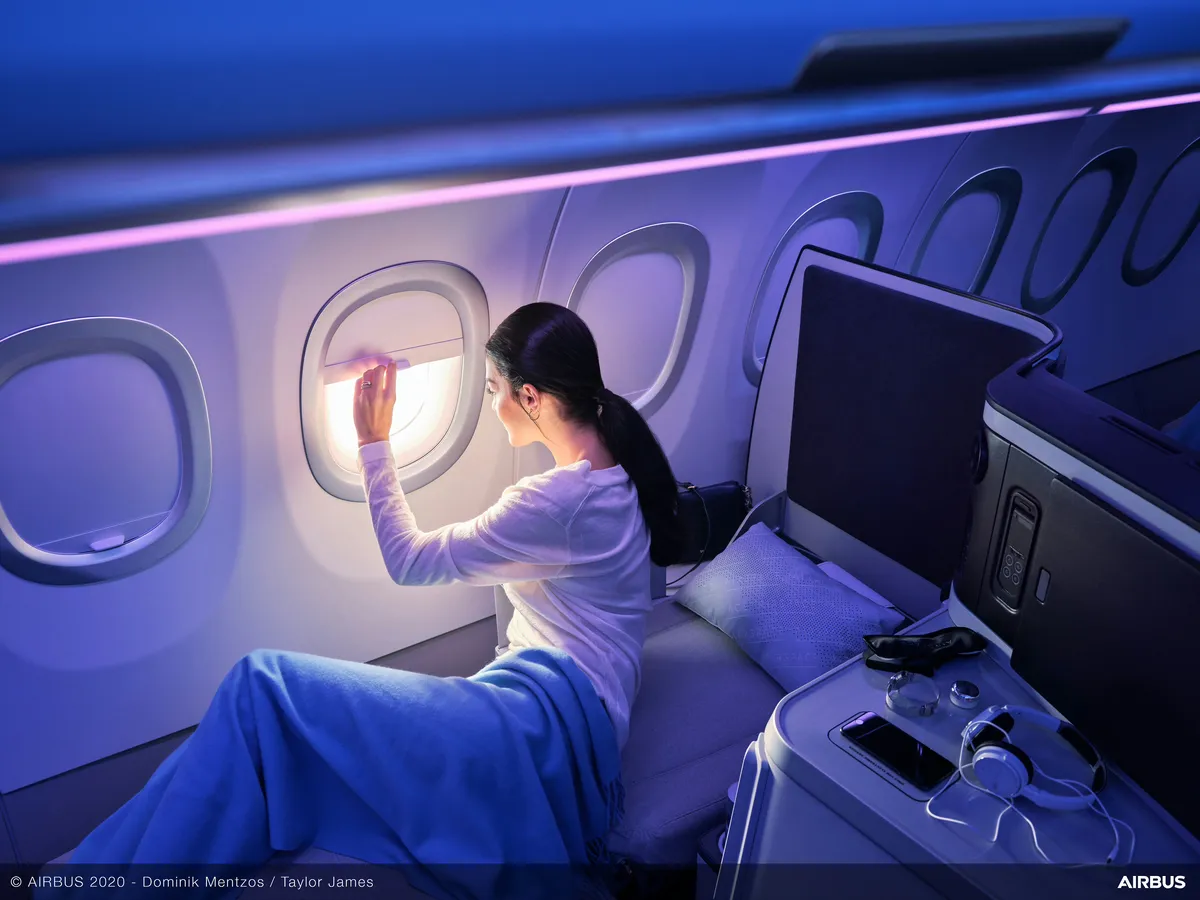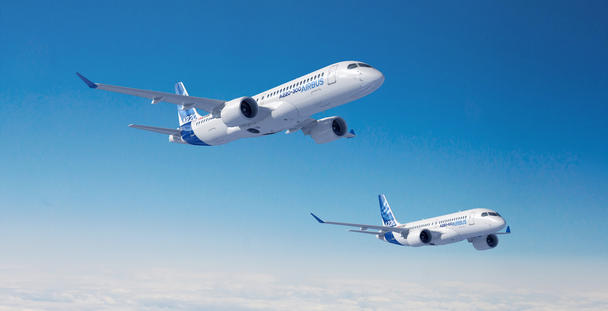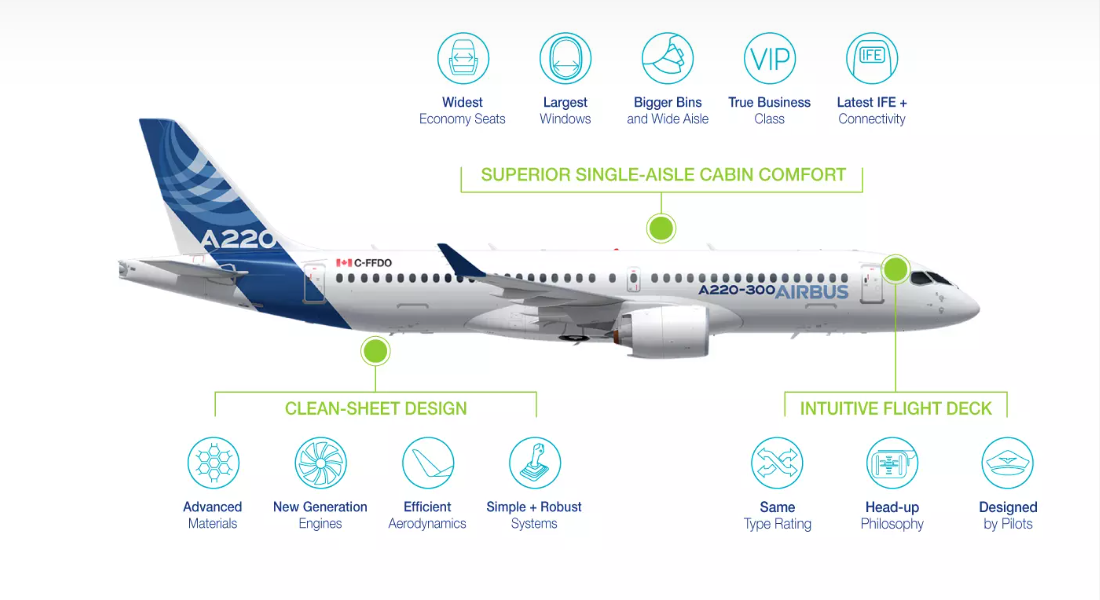Aero Hub India: The Airbus A320 family has become the most successful single-aisle aircraft in the world. Its popularity can be attributed to several factors, including its efficiency, versatility, and passenger comfort.
A True Family Concept
The A320 product line’s family concept and its designed-in versatility enable operators to match the right aircraft size to route demand, covering low- to high-density routes, as well as longer-range transcontinental services.
From Hot Deserts to the Icy Antarctic
A320 Family aircraft serve destinations ranging from hot desert environments to icy Antarctic landing sites, flying from short urban runways and remote high-altitude airports.
Enhanced Aerodynamics
The A320 Family is easy on the environment as well. The latest A320neo versions feature enhanced aerodynamics and the latest-generation jet engines, resulting in significant reductions in fuel burn and lower emissions.

Award-Winning Airspace Interior
Airbus’ award-winning Airspace interior was developed for widebody A350s and A330s, and has transitioned to the A320 Family. Featuring the latest in Airbus cabin innovation, its improvements significantly enhance comfort and well-being aboard. These include iconic ceiling lighting, redesigned window bezels for enhanced roominess and unobstructed views, new sidewall panels that provide an additional inch for extra personal space, as well as a new spacious lavatory design.
The large overhead storage bins can hold eight bags instead of five, providing highly sought-after additional volume for carry-ons.

Fly-by-Wire Technology
As the first civil aircraft to introduce fly-by-wire technology, the A320 Family has set the standards ever since its entry in service.
The A320 Family’s cockpit “front office” shares commonality with the other Airbus fly-by-wire aircraft. Pilots fly the A319, A320 and A321 with the Common Type Rating, and can easily make the step up to Airbus’ widebody fly-by-wire aircraft with Cross Crew Qualification – opening opportunities for versatility in their flying assignments and giving airlines flexibility in the deployment of flight crews.
The commonality factor also extends into the passenger cabin, with similar systems, control panels and procedures across the Airbus single-aisle and widebody families – an advantage that is appreciated by cabin crews and airline operators alike.
Cargo Loading System (CLS)
The A320 Family’s Cargo Loading System (CLS) option is another plus for airlines. Benefitting from the aircraft’s outward-opening cargo doors and large lower-deck compartment cross-section, the CLS maximizes usable cargo area while also accelerating processing on the ground – which helps airport personnel speed up their handling of passengers’ luggage as well as freight.

Thanks to Airbus’ significant research and development investments, the A320 Family continues to innovate.
The NEO (New Engine Option) is available for the A320 Family’s three largest versions: the A319neo, A320neo and A321neo. There is a choice of two advanced turbofan engines: the Pratt & Whitney GTF™; and the LEAP-1A from CFM International. The NEO versions also feature Airbus’ large, fuel-saving wingtip devices known as Sharklets™.
With these enhancements, A320neo Family aircraft benefit from 20% fuel burn reduction when compared to previous-generation aircraft (and up to 30% for the A321XLR), along with additional flight ranges and extra payload.
A321XLR

Extending the flight distances for A320 Family aircraft opens even more exciting travel possibilities. The longest-fuselage A321 variant can fly routes of up to 4,000nm with 206 passengers in its A321LR (long range) configuration, with extra fuel carried in three Additional Centre Tanks (ACTs).
The A321XLR version provides a further range extension to 4,700nm. Its increased maximum take-off weight (MTOW) of 101 tonnes enables the aircraft to be fitted with a permanent Rear Centre Tank (carrying 12,900 litres of fuel) and an optional forward ACT. This gives the A321XLR a flight time of up to 11 hours, with passengers benefitting throughout the trip from Airbus’ award-winning Airspace interior, which brings the latest cabin technology to the A320 Family.
Real Numbers and Facts:
- As of October 2024, a total of 18,994 A320 family aircraft have been ordered, and 11,707 have been delivered.
- The global A320 fleet has completed more than 176 million flights over 328 million block hours since its entry into service.
- The A320 family is operated by more than 350 airlines worldwide.
- American Airlines is the largest A320 operator with 479 aircraft in its fleet.
- #IndiGo is the largest customer for the A320 family with 930 aircraft on order.
A320 Family Sales and Customers:
- Total Orders: 18,994
- Total Deliveries: 11,707
- Major Customers:
- IndiGo (India): 930 aircraft on order
- Ryanair (Ireland): 623 aircraft on order
- American Airlines (USA): 479 aircraft in service
- United Airlines (USA): 383 aircraft in service
- Delta Air Lines (USA): 349 aircraft in service
Conclusion:
The Airbus A320 family’s popularity stems from its combination of efficiency, versatility, passenger comfort, and reliability. These factors, coupled with its “true family concept,” have made it the preferred choice for airlines around the world, contributing to its status as the most successful single-aisle aircraft in the world.

Tags:
Airbus A320, Airbus A320 family, commercial aircraft, aviation industry, airline industry, aerospace engineering, aircraft technology, fuel efficiency, passenger comfort, airline operations,
#AirbusA320 #A320Family #Aviation #AirlineIndustry #Aerospace #AircraftTechnology #FuelEfficiency #PassengerComfort #AirlineOperations #Travel #Technology #Innovation #IndiGo #Ryanair #AmericanAirlines #UnitedAirlines #DeltaAirLines #aerohubindia

[…] Skip to content Newsletter Random News […]
[…] and Boeing jets the airline ordered last year in 2023. This previous order included 40 A350s, 210 A320neo-family Aircrafts, 190 Boeing 737 Max, 20 Boeing 787s, and 10 Boeing […]
[…] and Boeing jets the airline ordered last year in 2023. This previous order included 40 A350s, 210 A320neo-family Aircrafts, 190 Boeing 737 Max, 20 Boeing 787s, and 10 Boeing […]
Each sentence builds on the last, creating a sense of momentum that makes it impossible to stop reading.